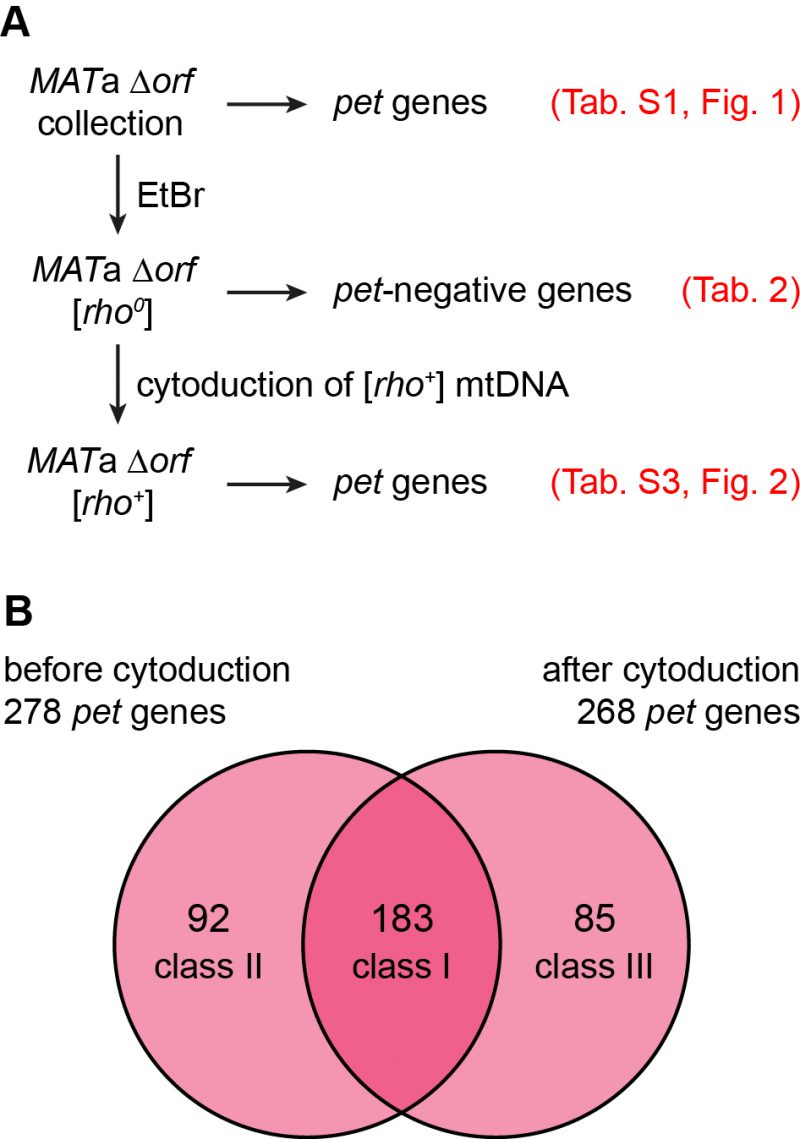Back to article: Systematic analysis of nuclear gene function in respiratory growth and expression of the mitochondrial genome in S. cerevisiae
FIGURE 2: Contribution of mtDNA maintenance to the variability of pet phenotypes. (A) Flow chart depicting the experimental outline. In brief, the whole deletion collection was treated with EtBr to induce loss of mtDNA. Functional [rho+] mtDNA was re-introduced into each strain by cytoduction. The resulting [rho+] deletion collection was tested for growth on rich media containing glycerol as nonfermentable carbon source. See text for details. (B) Venn diagram comparing the sets of deletion mutants that showed a pet phenotype before and after EtBr-treatment and cytoduction. The mutants were grouped into three classes: Mutants that exhibited a pet phenotype before and after cytoduction were classified as class I mutants, those that were rescued by cytoduction were grouped into class II, and mutants that were unable to grow on media with glycerol as the carbon source only after cytoduction are referred to as class III mutants. Three of the 278 pet mutants from the original deletion collection exhibited a petite-negative phenotype and were omitted from the analysis.

